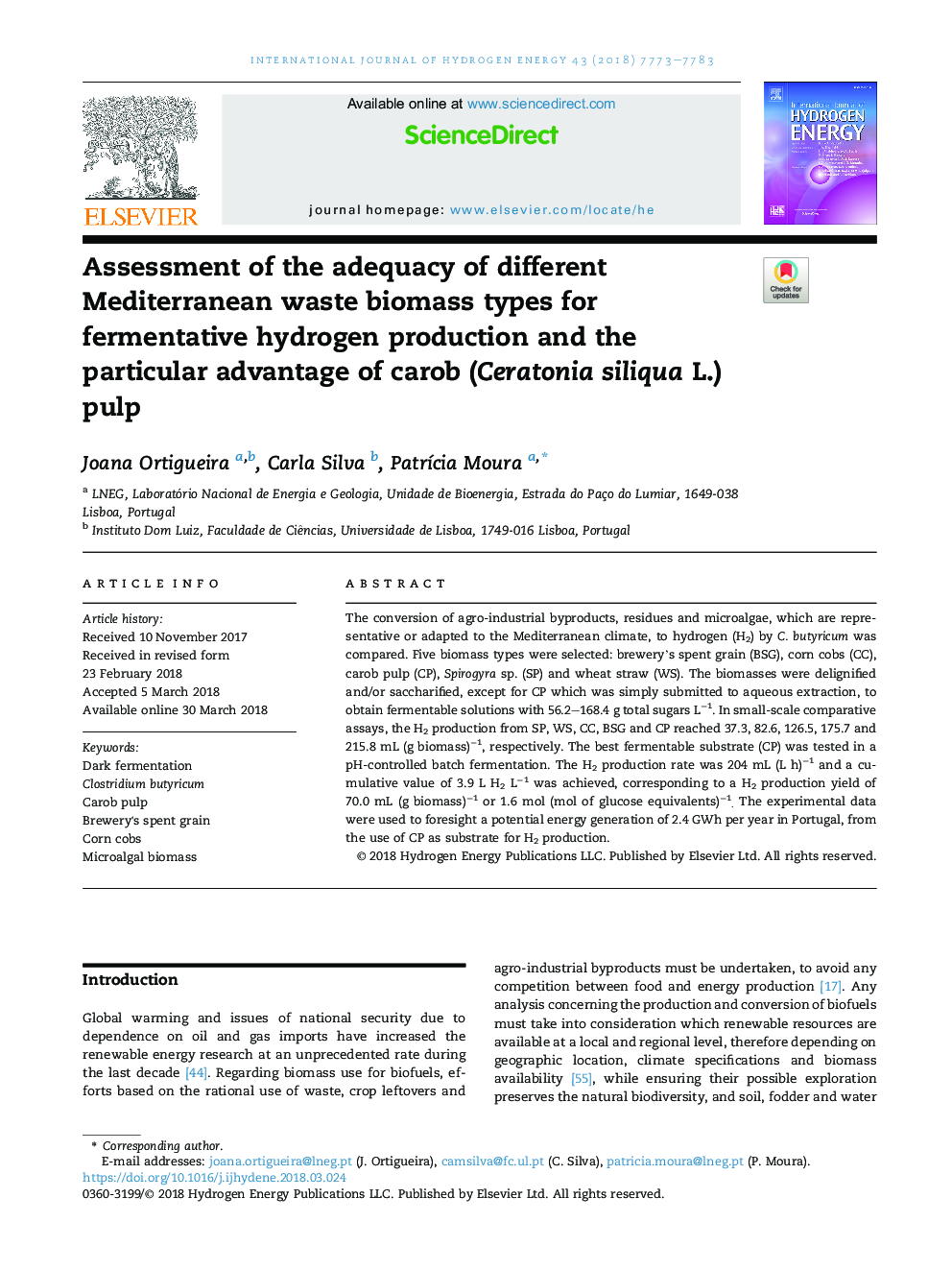| Article ID | Journal | Published Year | Pages | File Type |
|---|---|---|---|---|
| 7706350 | International Journal of Hydrogen Energy | 2018 | 11 Pages |
Abstract
The conversion of agro-industrial byproducts, residues and microalgae, which are representative or adapted to the Mediterranean climate, to hydrogen (H2) by C. butyricum was compared. Five biomass types were selected: brewery's spent grain (BSG), corn cobs (CC), carob pulp (CP), Spirogyra sp. (SP) and wheat straw (WS). The biomasses were delignified and/or saccharified, except for CP which was simply submitted to aqueous extraction, to obtain fermentable solutions with 56.2-168.4 g total sugars Lâ1. In small-scale comparative assays, the H2 production from SP, WS, CC, BSG and CP reached 37.3, 82.6, 126.5, 175.7 and 215.8 mL (g biomass)â1, respectively. The best fermentable substrate (CP) was tested in a pH-controlled batch fermentation. The H2 production rate was 204 mL (L h)â1 and a cumulative value of 3.9 L H2 Lâ1 was achieved, corresponding to a H2 production yield of 70.0 mL (g biomass)â1 or 1.6 mol (mol of glucose equivalents)â1. The experimental data were used to foresight a potential energy generation of 2.4 GWh per year in Portugal, from the use of CP as substrate for H2 production.
Related Topics
Physical Sciences and Engineering
Chemistry
Electrochemistry
Authors
Joana Ortigueira, Carla Silva, PatrÃcia Moura,
